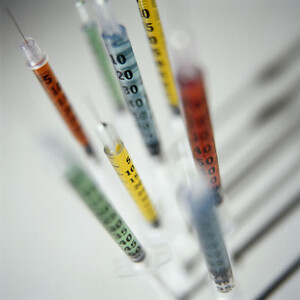Giving 12 years of market protection to brand-name biopharmaceuticals would add to mounting pressure on healthcare costs and deprive patients of affordable follow-on biologics for many years, according to an editorial in The Boston Globe. It says US Congress should enact a law that provides exclusivity for more than five years but fewer than 12 to balance innovation and affordability of biotech drugs.
Market protection for biologicals should be less than 12 years
Biosimilars/News
|
Posted 18/12/2009
 0
Post your comment
0
Post your comment

The biotech industry is vital to the Massachusetts, US, economy and the complex drugs made by companies here deserve robust protection as intellectual property. But giving exclusive markets to those companies for too long means that the drugs are priced beyond the reach of some patients for years – and it only adds to the upward pressure on healthcare costs.
Expensive biotechnology drugs – typically made from living cells – cost patients and insurers billions of dollars a year even as they treat intractable illnesses. US Congress has tried admirably, in pending legislation, to open the door for approval of generic versions of drugs known as biologicals. But, after intensive lobbying by the biotech industry, the measures that are emerging from US Congress grant too many years of exclusivity to the original makers. Provisions in the House healthcare bill and in a bill approved by the US Senate Health Committee would not allow generic imitators of biotech drugs on the market until after the original drugs have been on sale for 12 years.
That is too long, more than double the five years of protection from competition guaranteed for conventional drugs. It is quite likely that extensive lobbying accounts for some of the disparity; The New York Times recently reported that lobbyists for the biotech firm Genentech ghostwrote parts of official statements made by 42 members of US Congress on the parts of the healthcare reform bill related to generic biotech drugs.
The 12-year protection is also excessive because competition from generics is not likely to erode the ability of the original biotech manufacturers to continue reaping profits. There are onerous technical barriers to making so-called biogenerics, unlike generic versions of conventional medications, so companies that invent original drugs are likely to retain market share despite the new competition. In Europe, where a path for approving generic versions of biologicals already exists, the original drugs’ prices have dropped only by about 25–30%, according to the New England Journal of Medicine.
The downside of this, of course, is that approving generic versions is unlikely to eliminate the drugs’ annual five- and six-figure price tags anytime soon. Yet even modest savings add up. Medicare spends more than US$2 billion per year on just one biological drug, Epogen, used to treat anaemia in kidney patients. The US Congressional Budget Office estimates that the US government could save more than US$9 billion over the next decade if biogenerics come on the market after seven years. The long-term savings would be even greater.
In clearing the path for generic alternatives to expensive biologicals, Congress should enact a shorter window of market exclusivity than 12 years, but more than the five years afforded to simpler, conventional drugs. A protection period that falls directly in between these extremes would strike a balance between encouraging companies to make biological drugs and making them affordable.
In this case, what is optimal for Massachusetts drug firms is not good for the nation or for suffering patients. A compromise is necessary.
References:
Market protection for biotech drugs should be less than 12 years. BIO SmartBrief. 2009 Nov 25.
Biotech bills give drugmakers too many years of exclusivity. The Boston Globe. Editorial. 2009 Nov 24.
Source: BIO SmartBrief; The Boston Globe
Research
Reaching ESG goals in pharmaceutical development
What is the future for the US biosimilar interchangeability designation
General
Samsung Bioepis wins Pyzchiva case; Regeneron patent rulings threaten foreign biosimilars
Chinese biosimilars go global: growth, partnerships, and challenges
EMA recommends approval for four biosimilars targeting three therapies

Biosimilars/News Posted 10/10/2025
FDA approves first interchangeable rapid-acting insulin biosimilar, Kirsty

Biosimilars/News Posted 03/10/2025
The best selling biotechnology drugs of 2008: the next biosimilars targets








Post your comment